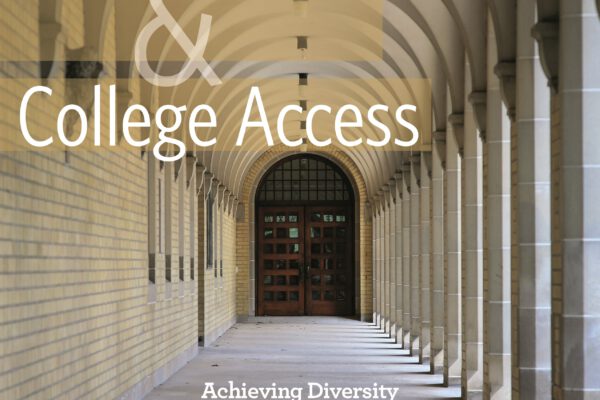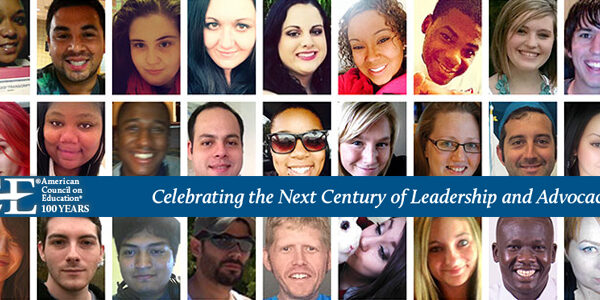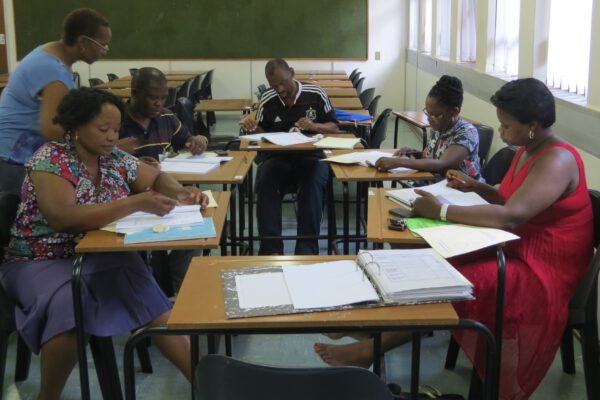
As ACE celebrates its centennial in 2018, this is one in a series of posts that looks at how ACE initiatives have left an impression on the higher education landscape and impacted peoples’ lives.
In November 2005, Jordan-Matthews High School in Siler City, North Carolina, hosted an event called College Application Day, with the goal of having every senior complete and submit at least one college application. The program was so successful that it soon spread statewide, reaching underserved students, especially first-generation students and students from low-income families. On average, 72 percent of participants enrolled in college the next fall.
By 2011, ACE President Molly Corbett Broad advocated scaling the program nationwide.
Now an initiative in all 50 states plus the District of Columbia, the American College Application Campaign (ACAC) helps coordinate college application programs each fall. During the 2017 campaign, 6,370 high schools across the country hosted college application events, resulting in 500,864 seniors submitting 836,427 applications.

“It has been inspiring to see ACAC grow from one high school in North Carolina to over 6,300 high schools nationally in 2017,” said Melissa Caperton, director of ACAC. “Over that time, our ACAC state partners have supported over 2 million students as they prepared for and completed the college application process. We continue to expand ACAC annually with the engagement of more schools and more students and have set a goal of reaching 20,000 high schools in the next few years.”
Delaware celebrates College Application Month from Oct. 16 to Nov. 17 as part of the Delaware Goes to College Initiative, which aims to increase the college enrollment rate in the state to 60 percent by this year. In 2017, Delaware Gov. John Carney visited Milford High School during College Application Month to talk to students about the college process. He gave advice on college application essays and promoted the state’s Student Excellence Equals Degree Program and Inspire Scholarship, both of which help students attend two years of college tuition free, reported MilfordLIVE.
Of the need to not only get students to apply to college, but also support them in completing a full degree, Corney said, “Many of these are first generation college students who realize that education will carry them farther in the world. We want to do all we can to eliminate any barriers they may face.”
Around the same time of year, from Oct. 30 to Nov. 3, 2017, Alabama celebrated its fifth annual Alabama College Application Week, according to Alabama Today. During that time period, high school seniors could apply to participating institutions and have their application fees waived. More than 30 colleges and universities signed up, and over 350 high schools participated in activities and college application fairs.
“Students need every opportunity to reach their full potential—earning a college degree after high school graduation is a very rewarding way to accomplish this goal,” said Willietta Conner, coordinator of the Alabama College Application Campaign.
On the other side of the country, College In Colorado, part of the Colorado Department of Higher Education, hosts College Application Month throughout October. The goal is for every high school senior to complete the FAFSA and at least one postsecondary education application. As an incentive, participating students last year had the chance to win weekly prizes such as laptops, tablets, an Amazon Echo, and $500 scholarships provided by College In Colorado, according to the Across Colorado Patch.
“We know the application process can be intimidating, so we’re providing multiple College Application Month activities and resources to help break down and smooth out the process,” said Julia Pirnack, director of College In Colorado.
Despite the clear evidence of economic and societal benefits, only 55 percent of the adult population in Colorado has a degree or certificate, and only 49 percent have an associate or higher degree. Partnering with schools and helping students understand their options will help every Coloradan reach their full potential.”
If you have any questions or comments about this blog post, please contact us.


